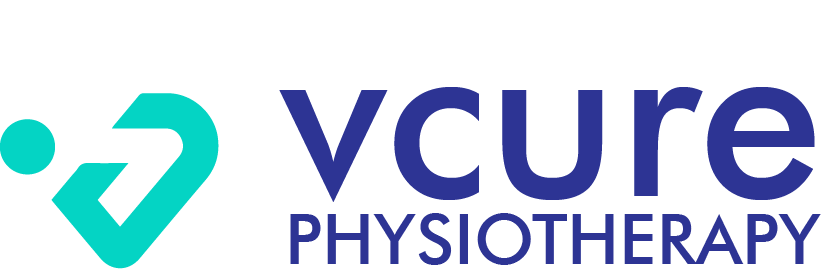Imagine you’re not just keeping track of your heart rate on a smartwatch, but you’re living parallel lives—one in the real world and one inside a secure, AI-powered simulation. This second “you” predicts illnesses before they happen, tests medications without touching your body, and gives your doctor a personal GPS for your health journey.
What if your doctor had a virtual version of you—not just your medical records, but a real-time simulation of your body that could predict how you’d respond to different treatments. Sounds like science fiction, right? Well, it’s not.
Welcome to the world of Human Digital Twins—a revolutionary concept that’s quickly gaining momentum in personalized healthcare.

So, What Exactly Is a Human Digital Twin?
A Human Digital Twin is more than a health app. It’s a comprehensive virtual clone of your body that incorporates:
- Genomic data
- Lab results
- Organ-level simulations
- Real-time metrics from wearables
- Environmental and behavioral inputs
This living, breathing data model evolves alongside you, continuously learning and improving to mirror your current health and predict future outcomes. Think of it as your body’s digital shadow—but smarter.
Read Tech- Health Article About : The 14-Year-Old’s AI App Detects Heart Disease in Seconds
Unique Insights You Didn’t Know About Human Digital Twin
Most people associate HDTs with surgery planning or drug testing. But here’s what few are talking about:
1. Digital Twins Can Be Created Before You’re Born
Prenatal twins? Yes. Some researchers are now creating digital twins of fetuses to detect genetic or developmental risks early. A 2023 project in Switzerland is using fetal digital twins to simulate congenital heart conditions in unborn babies and plan in-utero surgeries.
2. They Simulate Emotions and Mental Health Patterns
Companies like MindMaze are integrating neurobehavioral modeling into digital twins, allowing simulations to predict depressive episodes or anxiety triggers before they surface. This could shift mental health treatment from reactive to preventive.
3. Insurance Companies Are Watching Closely
While controversial, some insurers are exploring HDTs to personalize premiums. A well-maintained twin could reduce your insurance costs if it shows you’re trending toward good health—though ethical and privacy debates are red-hot on this front.
4. NASA Uses Digital Twins for Astronauts
Long before the term was trending in healthcare, NASA was using digital twins of astronauts to study the effects of space travel. These twins simulate long-term exposure to zero gravity, muscle loss, and radiation—insights now influencing aging research on Earth.
5. Organs Have Their Own Twins
You don’t need a full-body twin to benefit. Liver digital twins are being used to test drug toxicity, while heart twins simulate arrhythmia risks. In some hospitals, these models are even used during live surgeries to guide surgeons in real time.
Real-Life Use Cases Of Human Digital Twin
Let’s ground this in the now. These aren’t just concepts—they’re in clinical trials, hospitals, and labs:
- Twin Health: Uses metabolic digital twins to reverse Type 2 diabetes by modeling your body’s response to foods, stress, and activity.
https://www.twinhealth.com - Siemens Healthineers: Pioneering digital cardiac twins used in Germany and Singapore to personalize treatments for heart failure.
https://www.siemens-healthineers.com - Dassault Systèmes’ “Living Heart Project”: Collaborating with FDA to test heart valves and devices via twins.
https://www.3ds.com - Philips’ IntelliSpace Digital Twin Suite: Enables hospitals to create operational twins for managing patient flow and ICU readiness.
https://www.philips.com
Why Should You Care?
Because HDTs are coming to your hospital, your smartwatch, and your health apps sooner than you think. They can:
- Alert you to disease risks before symptoms appear.
- Help customize your diet, workout, and medication based on your actual metabolism.
- Serve as your advocate in a complex healthcare system.
In a world where “one-size-fits-all” healthcare is no longer acceptable, digital twins are about empowering you with a healthcare experience that is just as unique as your DNA.
But Hold On—It’s Not All Smooth Sailing
Let’s talk real for a second.
Data Privacy
What happens if your twin gets hacked? That’s not just an email leak—it’s you.
Accessibility Gap
These innovations could widen the healthcare inequality gap unless made affordable and widely accessible.
Ethical Grey Zones
Should employers or governments access your twin? If your twin says you might develop cancer in 5 years, how will that affect your insurance or job prospects?
These questions need answers—and soon.
So, Can You Get Your Human Digital Twin?
Not quite yet—at least not the full-blown, predictive version. But you might already be halfway there if you’re wearing a smartwatch, tracking your sleep, and using a fitness app. These tools are feeding into what may one day become your complete digital twin.
Startups and health tech giants are racing to build platforms where you can integrate your data, visualize your health risks, and personalize your care. Companies like Twin Health, Siemens, Dassault Systèmes, and IBM Watson Health are already making significant strides.
What the Future Looks Like
In the next 5–10 years, Human Digital Twins could be as common as electronic health records. You might consult your digital twin before taking a new medication, changing your diet, or even booking a surgery.
Doctors won’t just ask what’s wrong, they’ll ask, What does your twin say?
Your Human Digital Twin Might Just Save Your Life
The idea of creating a replica of yourself to guide medical decisions feels a bit wild… until you realize the alternative: guessing. Human Digital Twins are shifting healthcare from reactive to predictive, from generic to deeply personalized.
This isn’t just innovation. It’s a revolution—and you could be part of it.
References
- Twin Health: https://www.twinhealth.com
- Dassault Systèmes Living Heart Project: https://www.3ds.com
- Siemens Healthineers Digital Twin Cardiology: https://www.siemens-healthineers.com
- Philips Digital Twin Solutions: https://www.philips.com
- Nature: The Virtual Patient (April 2024) – https://www.nature.com/articles/s41591-024
- MIT Technology Review: “How Human Digital Twin is Transforming Medicine” (2024) – https://www.technologyreview.com
Read About : Is Stem Cell Banking a Scam or a Lifesaving Investment? The Truth Exposed!
Visit Our Doctors At : https://g.co/kgs/rTqAjgt





